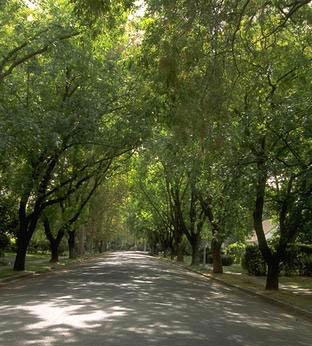
"If you live on a street with sycamores or maples, you usually get a little treat in the fall when they turn colors," Bill Patzert said. "This year, you have already been raking their leaves."
Patzert believes the fall may be colorless in Southern California this year, but Louis Santiago, professor of botany and plant sciences at UC Riverside, said he's not too worried about that.
“A lot of the trees we see turn colors are urban trees, and they tend to be irrigated so the drought has less of an effect on them,” Santiago said. “I wouldn't say we're going to have a terrible fall.”
For the story, UC Cooperative Extension advisor Janet Hartin provided a primer on fall colors.
When nighttime temperatures drop, leaves stop creating chlorophyll. In spring and summer, the green of chlorophyll covers up the yellow, orange and brown hues produced by carotenoids. When chlorophyll disappears, bright sunshine promotes the production of anthocyanins, which create red and orange colors.
“So in reality, foliage doesn't ‘turn' orange or red at all,” Hartin said. “Carotenoids and anthocyanins are always in the leaves; they are simply unmasked once the active growing season is finished.”